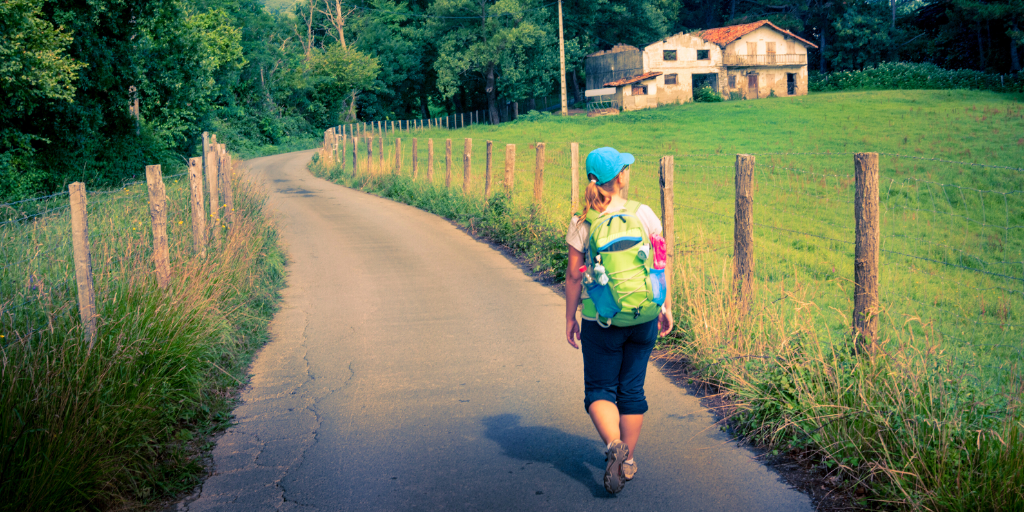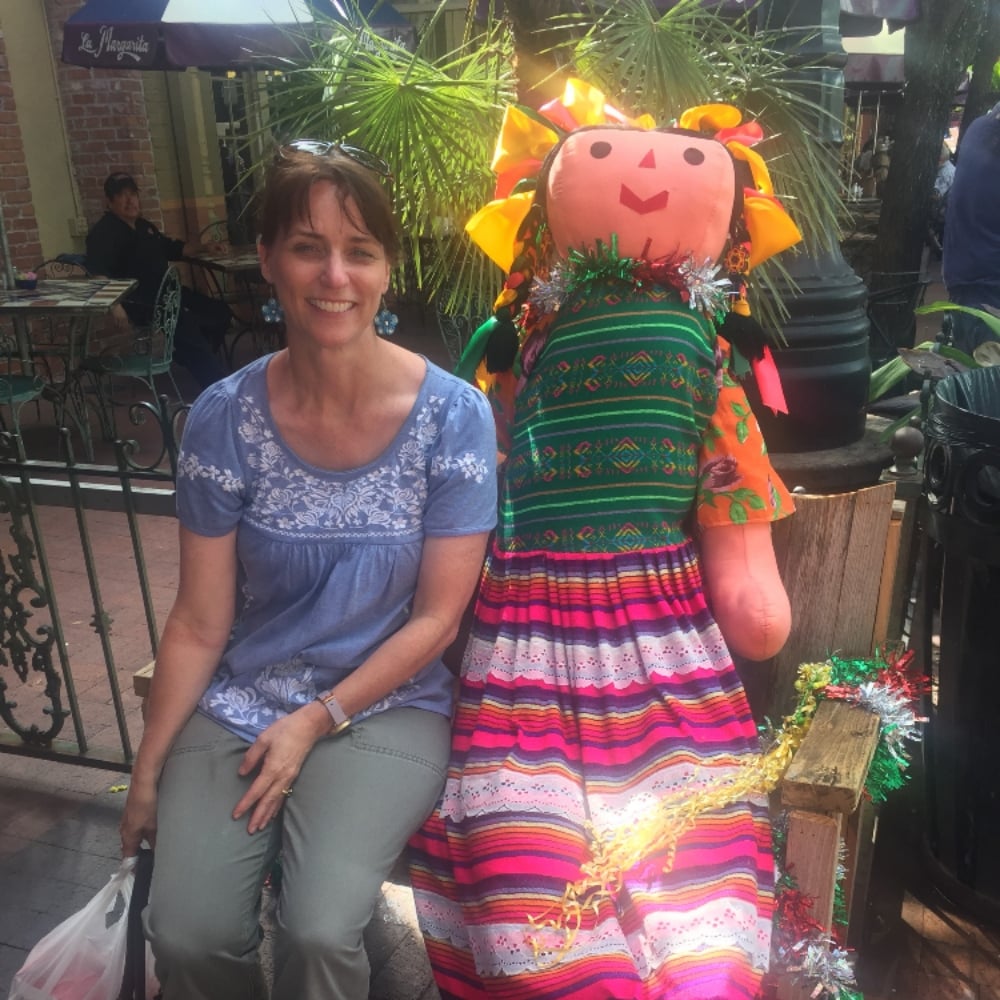
Sarah Pedrozo reflects on uniting our time, place and space into an ongoing pilgrimage during the Eucharistic Revival.
One of the ways we can participate in the Eucharistic Revival is by turning the next three years into a personal pilgrimage.
Have you ever been on a pilgrimage? Loaded up a backpack, put on some sturdy shoes, and headed out with the intention of eventually arriving at a specific destination? The answer for all of us is “Yes!” The truth is, every person on earth is on a pilgrimage, all the time. We all put on a backpack, loaded with things we believe are vitally necessary to take, things that we carry with us every day. We dress ourselves in our beliefs and attitudes and we show these to everyone who sees us, for good or for bad. We all have a starting point and we will each arrive at an endpoint, a moment when our journey will be completed. Those of us fortunate enough to be participating in the Eucharist Revival, however, have the ability to elevate our everyday journeying into a holy pilgrimage. We can be intentional about what we carry with us, who we will travel with, how we will travel, and most importantly, our final destination.
Pope St. John Paul II said that “All of the spiritual life is a pilgrimage to the heart of the Father.” A holy pilgrimage takes place across three dimensions, sacred time, sacred space and sacred place. We are invited to journey with Jesus in all three areas for the next three years.

Sacred Time
There are two different ways of looking at time. We are all used to living in chronos time, moving through sequential hours, minutes and seconds. God’s time, however, is called kairos time, meaning the “opportune or appointed moment,” the time for God’s action. In the incarnation of Jesus, both chronos and kairos times are united. The next three years give us an opportunity to unite both chronos and kairos times in our own lives, to use the hours and minutes of our days seeking to make God known and loved more in the world, to recognize that this minute, this hour, is the appointed time.
Sacred Space
A sacred space is simply a holy area where we look for an encounter with God. Sacred spaces are associated with quiet, with being set aside. Think of wide open spaces in nature that inspire wonder and awe, or the quiet, peaceful interior spaces of churches. We are each called to become a holy space ourselves, a place where God resides within, where we can facilitate an encounter with God for others. Sacred spaces are concerned with the spiritual and the unseen.
Sacred Place
While sacred spaces mediate the spiritual, sacred places are physical. A sacred place is usually reserved for a particular, holy, ritual action, a place set apart to do something specific. It might be a place where an action of God was demonstrated in the past, such as the home of a saint or a location where something good happened, or a place of God’s continued presence today, like our churches. Sacred places reveal God in the physical, in specific locations we can visit and see, made holy through specific actions.
Taken all together, sacred time, sacred space and sacred place represent the totality of our lives. It is in these three places we are invited to journey in a special way for the next three years. What might that look like?
Maybe that means you commit to changing your morning commute into a pilgrimage. Turn your car into a vehicle of pilgrimage by repeating a ritual action, such as prayer or listening to Scripture. Notice the people who are passing by around you and attempt to provide an encounter with God by being generous and patient. Offer the time in your car for a special intention or for the work of God. When possible, park far away from the door of your destination, and offer up both your extra steps and the closer parking spot for God’s best use.
Or perhaps you can create a dedicated prayer space in your home and commit to using it once a day, and invite your family to use it together once a week. Bless your children and spouse as they leave each morning. Or your pilgrimage might be promising to visit or call a neighbor you know could use extra attention, at the same time each day or week. Pray for this person, even if you don’t pray together. Do you cook a meal for your family most nights? Offer that daily task up as a tangible sign of feeding those who are journeying with you.
There are so many ways we can create pilgrimages in our lives, of elevating our chronos time, the ordinary moments of our everyday lives, into kairos time, opportunities to be in the presence of God, by intentionally uniting our time, space and place.
Our pilgrimages aren’t so much about adding a great deal more to our lives, but instead, in reframing the actions we already do into works of love. What will your pilgrimage be? When these three years have ended, where do you hope to be? Think about, pray about it, and write it down somewhere. Then just get moving!

Copyright 2022 Sarah Pedrozo
Images: Canva
An earlier version of this article was originally posted at Catholic365.com.
About the Author

Sarah Pedrozo
Sarah Pedrozo has worked in family faith formation for the past 15 years, helping families learn and live their Catholic faith. With master's degrees in theology and English, she especially likes using stories to catechize. Sarah blogs at BasketsAndBlessings.com, in between working and taking care of her family. She loves bluebonnets, her rescue dogs and the Texas Hill Country.


.png?width=1806&height=731&name=CatholicMom_hcfm_logo1_pos_871c_2728c%20(002).png)
Comments